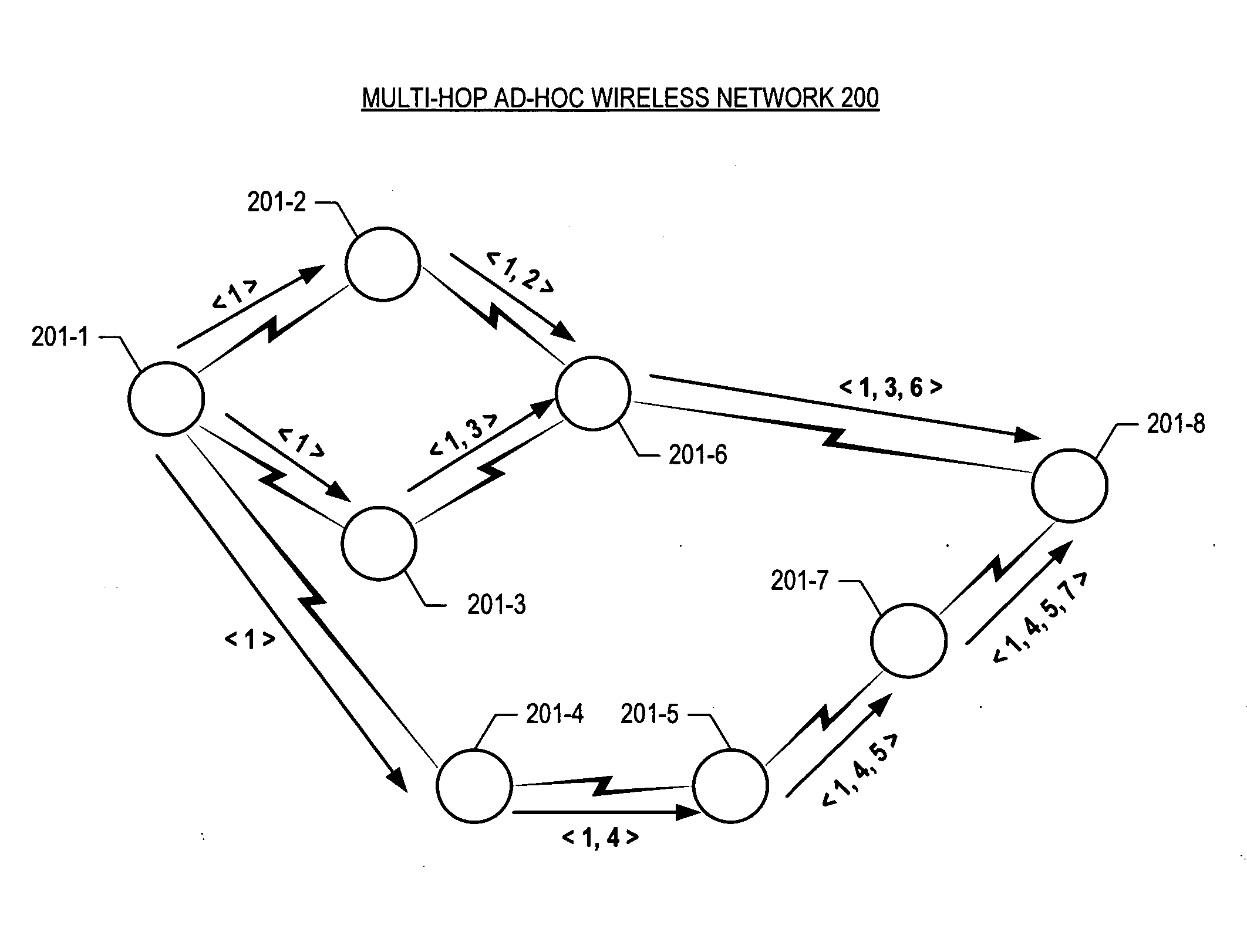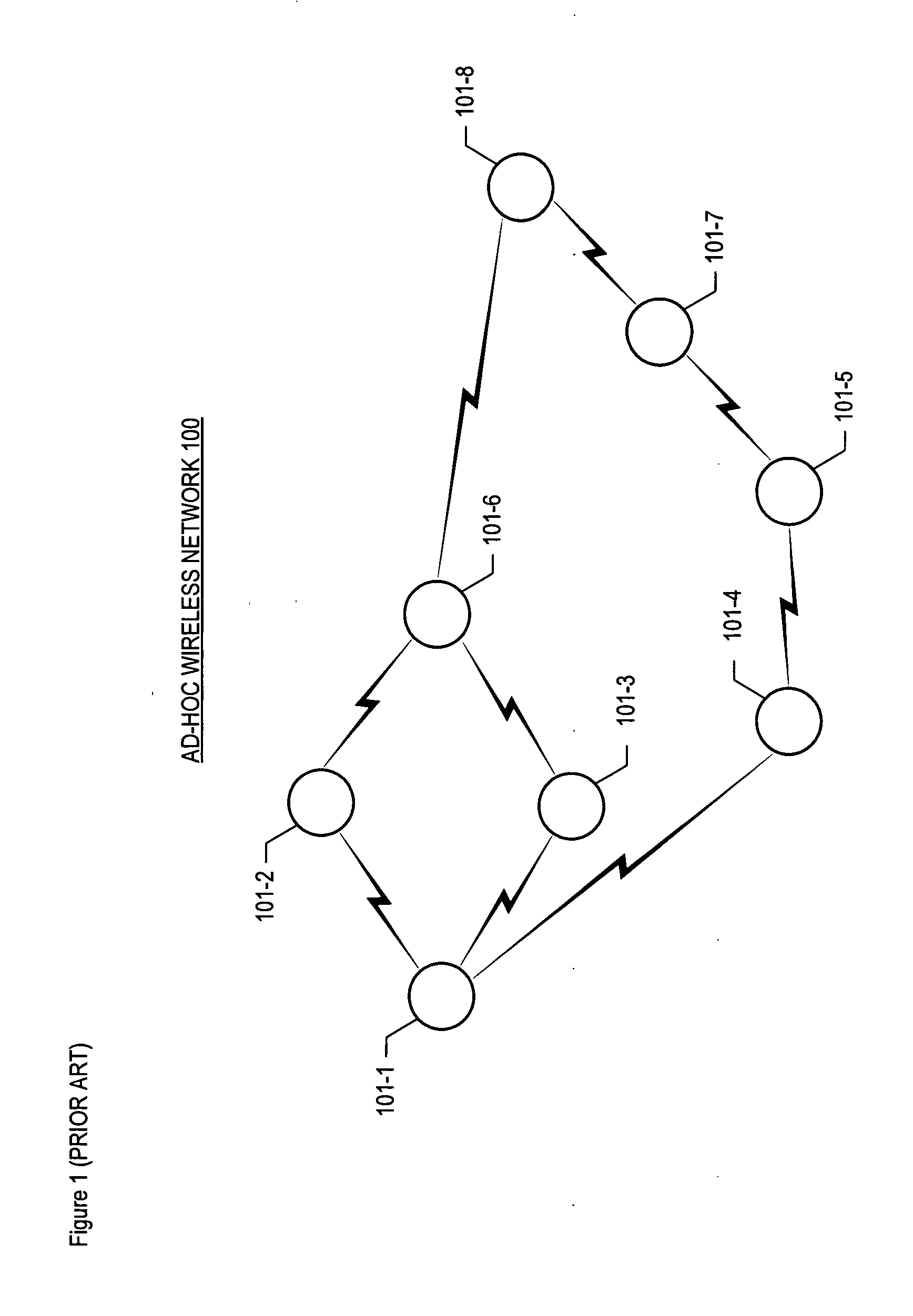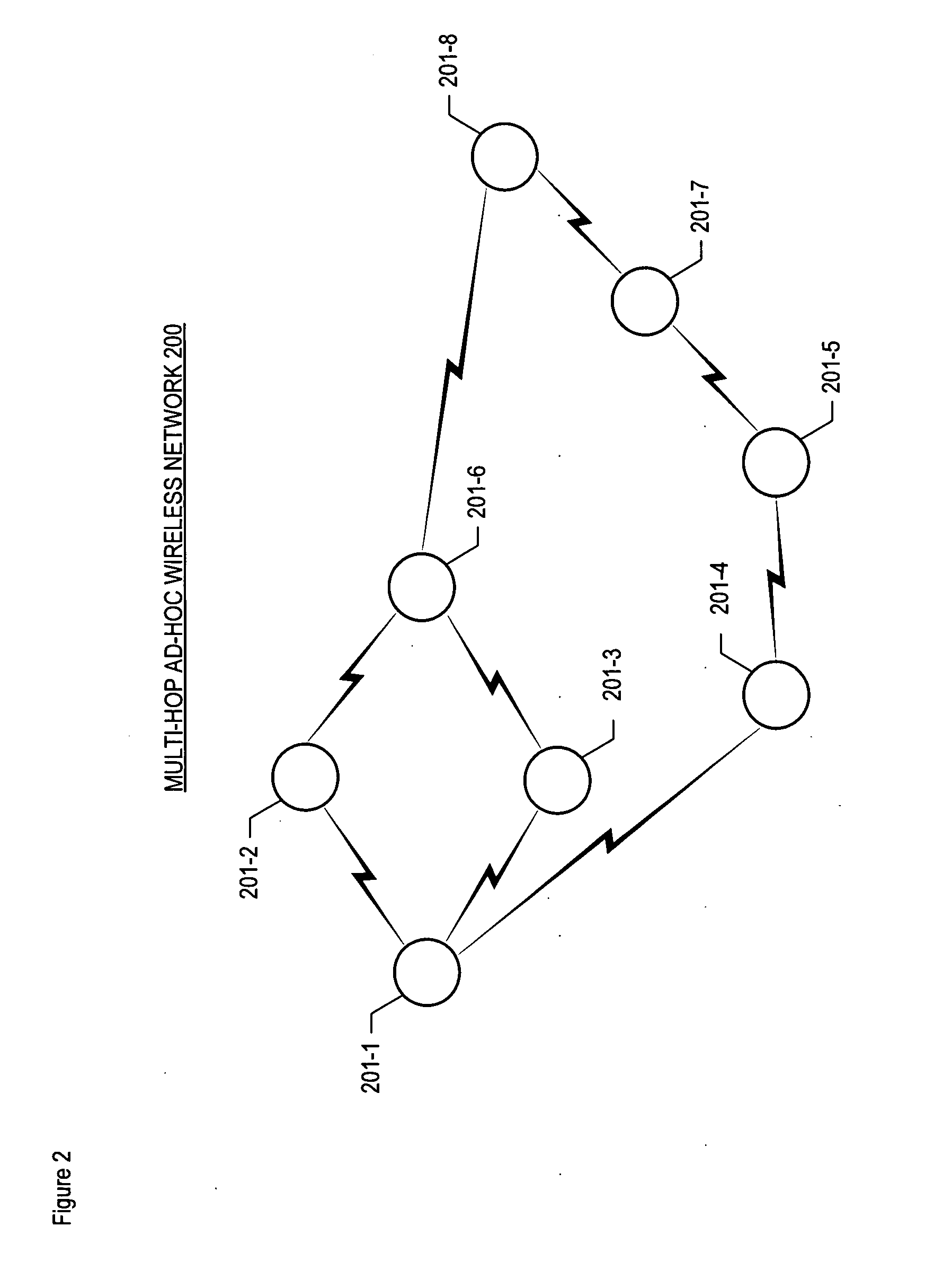Detection and Handling of Lost Messages During Load-Balancing Routing Protocols
a routing protocol and load-balancing technology, applied in the field of telecoms, can solve the problems of large route-setup overhead, frequent changes in network membership and topology, and proactive routing protocols, meanwhile, are slow to respond to the dynamism of the network
- Summary
- Abstract
- Description
- Claims
- Application Information
AI Technical Summary
Benefits of technology
Problems solved by technology
Method used
Image
Examples
Embodiment Construction
[0033]FIG. 2 depicts the salient elements of ad-hoc wireless network 200 in accordance with the illustrative embodiment of the present invention. As shown in FIG. 2, wireless network 200 comprises nodes 201-1 through 201-8, with wireless communication links between these elements indicated by “lightning bolts.” Each of nodes 201-1 through 201-8 is capable of transmitting and receiving messages in point-to-point fashion via the wireless communication links of network 200, of participating as an intermediate node in a multi-hop route through ad-hoc wireless network 200, and of transmitting messages in a multicast (i.e., point-to-multipoint) mode, as is well-known in the art. Moreover, as is described below and with respect to FIGS. 5 through 10, each of nodes 201-1 through 201-8 is capable of maintaining: a routing cache, a list of route requests recently received by the node, and the best (e.g., lowest, etc.) load metric value encountered for each route request.
[0034]In accordance wi...
PUM
 Login to View More
Login to View More Abstract
Description
Claims
Application Information
 Login to View More
Login to View More - R&D
- Intellectual Property
- Life Sciences
- Materials
- Tech Scout
- Unparalleled Data Quality
- Higher Quality Content
- 60% Fewer Hallucinations
Browse by: Latest US Patents, China's latest patents, Technical Efficacy Thesaurus, Application Domain, Technology Topic, Popular Technical Reports.
© 2025 PatSnap. All rights reserved.Legal|Privacy policy|Modern Slavery Act Transparency Statement|Sitemap|About US| Contact US: help@patsnap.com



